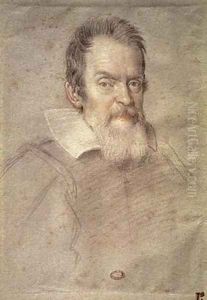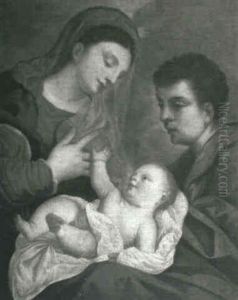Ludovico (Il Padovanino) Leoni Paintings
Ludovico Leoni, also known as Il Padovanino, was an influential Italian painter born in 1588 in Padua, then part of the Venetian Republic. His nickname, 'Il Padovanino,' literally means 'the little Paduan,' an affectionate reference to his place of birth. His father, Alessandro Varotari, was also a painter, which provided Ludovico with an artistic environment from an early age. Despite the limited information about his early life, it is known that Ludovico moved to Venice at a young age, where he would spend the majority of his career and where his work would be most profoundly influenced by the Venetian painting tradition.
Il Padovanino's work is characterized by its rich color palette and the sensual portrayal of figures, elements that align him with the Venetian school, particularly the influence of Titian, whose style he sought to emulate. Padovanino was known for his religious and mythological scenes, as well as portraits and historical subjects. His ability to blend the grandeur of the Renaissance with the emerging Baroque sensibility made his work highly sought after. One of his notable contributions to art was his exploration of light, which he used to enhance the emotional depth and realism of his subjects.
Throughout his career, Ludovico Leoni received numerous commissions for altarpieces and frescoes in Venice and its surrounding areas, which helped cement his reputation. His works are housed in several prestigious institutions, demonstrating his enduring legacy in the art world. Despite this, Il Padovanino remains a somewhat enigmatic figure, with his life outside of his artistic production not widely documented. He passed away in Venice in 1649, leaving behind a body of work that continues to be studied and admired for its beauty and technique. Ludovico Leoni's contribution to the Venetian school of painting marks him as a significant figure in the transition from the Renaissance to the Baroque period in Italian art.

